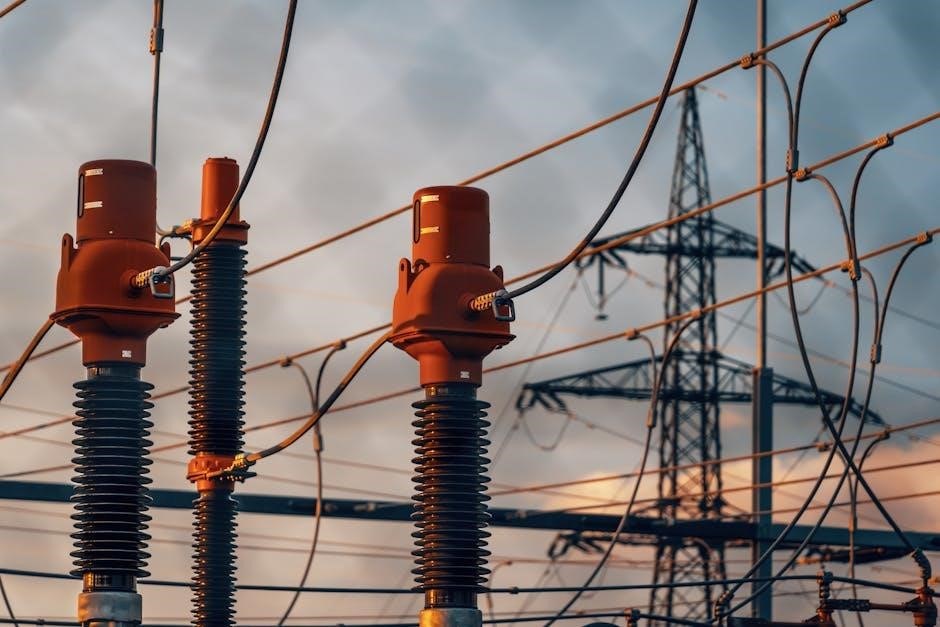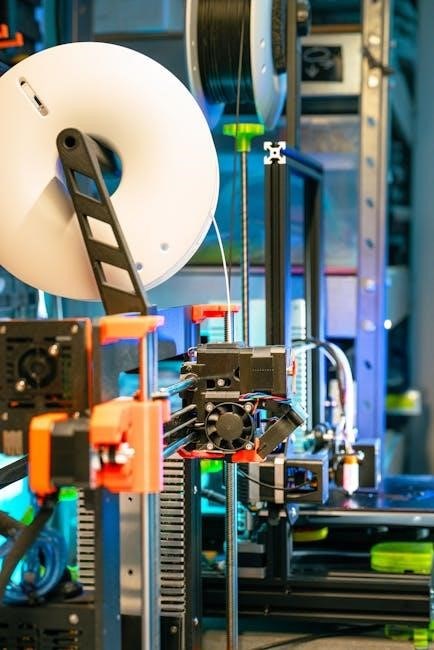

Identify common issues like steps not retracting, blown fuses, or diode polarity problems. Check wiring, test components, and ensure proper linkage maintenance for optimal functionality and safety.

Welcome to the AMP Research Power Step Troubleshooting Guide, designed to help you diagnose and resolve common issues with your power running boards. This guide provides a comprehensive overview of potential problems, their causes, and step-by-step solutions. Whether you’re experiencing steps that won’t retract, intermittent operation, or electrical faults, this resource will walk you through the process of identifying and fixing the issue. It covers essential topics such as understanding system components, testing diodes, checking fuses, and performing proper linkage maintenance. Additionally, it includes a flow chart guide and OBDII testing procedures for advanced troubleshooting. Before starting, ensure you review all safety precautions to avoid injury or further damage. This guide is your go-to resource for maintaining optimal functionality and extending the lifespan of your AMP Research Power Steps.

Understanding the Components
The AMP Research Power Step system consists of several key components that work together to ensure smooth operation. These include the motor, which powers the steps, and the controller, the brain of the system responsible for processing signals. The door ajar switch triggers the steps to deploy or retract when doors are opened or closed. Diodes are crucial for maintaining proper electrical polarity, while the wiring harness connects all components. The linkage system provides structural support and ensures synchronized movement of the steps. Understanding these components and their roles is essential for diagnosing issues effectively. Familiarizing yourself with their functions will help you identify potential failure points and perform repairs more efficiently. This knowledge is the foundation for resolving common problems like steps not retracting, electrical faults, or intermittent operation.
Common Issues and Solutions
Common issues with AMP Research Power Steps include steps not retracting properly, blown fuses, and diode polarity problems. These problems often stem from faulty wiring, loose connections, or incorrect installation. To address such issues, start by inspecting the wiring harness for any signs of damage or wear. Check the fuse box to ensure no fuses are blown, and verify that all connections are secure. If steps stop midway, it could indicate a malfunctioning motor or controller, which may require replacement. Lubricating moving parts and ensuring proper linkage alignment can also resolve operational issues. Regular maintenance, such as cleaning and lubricating the steps, can prevent many common problems. By understanding these frequent issues and their solutions, you can keep your Power Steps functioning smoothly and ensure reliable performance over time.

Steps Not Retracting Properly
If your AMP Research Power Steps are not retracting properly, there are several potential causes to investigate. First, check the door ajar switch, as a faulty or disconnected switch can prevent the steps from retracting. Inspect the wiring harness for any signs of damage, cuts, or corrosion, as this can disrupt communication between components. Additionally, ensure the fuse has not blown, as a blown fuse can disable the entire system. If the issue persists, test the motor for proper function and verify that the controller is operating correctly.
Another common cause is mechanical obstruction or misalignment in the linkage system. Ensure all moving parts are clean, well-lubricated, and free from debris. If the steps still fail to retract, consult the troubleshooting guide for advanced diagnostic steps or consider professional assistance to resolve the issue effectively.
Blown Fuse
A blown fuse is a common issue that can disable the AMP Research Power Steps. To diagnose this, locate the fuse box, typically found under the hood or near the battery. Identify the specific fuse associated with the Power Steps using the vehicle’s manual or the troubleshooting guide. Remove the fuse and inspect it for signs of damage, such as a broken filament or discoloration. If the fuse is blown, replace it with one of the correct amperage rating, as specified in the manual. Avoid using a higher-rated fuse, as it may cause further damage if a short occurs. After replacing the fuse, test the system to ensure proper operation. If the fuse blows again, it may indicate a deeper electrical issue, such as a short circuit or faulty component, requiring professional assistance. Always refer to the manufacturer’s guidelines for fuse replacement and system maintenance.
Diodes and Polarity Issues
Diodes and polarity issues can disrupt the proper functioning of AMP Research Power Steps. Diodes are crucial for maintaining the correct electrical flow within the system. If the diodes are connected with reversed polarity or are faulty, the steps may malfunction, causing intermittent operation or failure to retract. To address this, inspect the wiring harness for any signs of damage or corrosion. Ensure all connections are secure and properly seated. Use a multimeter to test the diodes for continuity and voltage drop. If a diode is found to be faulty, replace it with an identical one, following the manufacturer’s specifications. Correcting polarity issues involves verifying that all wires are connected to the appropriate terminals. If unsure, refer to the wiring diagram provided in the troubleshooting guide or consult a professional to avoid further damage to the system. Proper electrical connections are vital for the safe and reliable operation of the Power Steps.

Steps Stopping Midway
The AMP Research Power Steps may stop midway due to obstructions, power loss, or mechanical issues. First, check for debris or objects blocking the steps’ path. Ensure the running boards are free from dirt or ice accumulation. If the steps stop unexpectedly, inspect the wiring for loose connections or damage. A blown fuse or tripped circuit breaker could also interrupt power supply. Additionally, faulty sensors or a malfunctioning motor might cause the steps to halt. Lubricate the linkage and hinges to ensure smooth operation. If the issue persists, test the motor and controller using a multimeter to verify proper voltage and current flow. Consult the troubleshooting guide for detailed diagnostic steps or reset the controller as outlined in the manual. Always ensure the system is powered off before performing any physical inspections or repairs to avoid injury or further damage.
Controller Reset

Resetting the AMP Research Power Step controller can resolve various operational issues. Begin by locating the controller, typically found under the hood near the battery. Disconnect the vehicle’s battery to ensure no power is supplied to the system. Next, press and hold the reset button on the controller for about 10 seconds to clear any stored errors. If your model lacks a reset button, refer to the manual for specific instructions, which may involve shorting two terminals or performing a power cycle. After resetting, reconnect the battery and test the power steps to see if the issue is resolved. If problems persist, check for error codes using an OBDII scanner or consult the troubleshooting guide for further diagnostics. Always ensure safety by disconnecting power before performing any maintenance.
Testing Components
Testing components is crucial for diagnosing issues with your AMP Research Power Step. Start by verifying the door ajar switch functionality, as it often triggers step deployment. Use a multimeter to check for continuity and ensure proper wiring connections. Next, test the motor by applying direct power to confirm it operates smoothly. Inspect the controller for any signs of damage or corrosion and verify its power supply. Check the diodes for proper polarity and functionality, as incorrect polarity can cause system malfunctions. Additionally, test the linkage for binding or wear, which may hinder step movement. Use an OBDII scanner to identify any stored error codes related to the power step system. Always consult the manual for specific wiring diagrams and test procedures. Systematic testing helps isolate the root cause of the problem, ensuring effective repairs. Regular testing also prevents future issues by identifying potential faults early. By following these steps, you can restore your power steps to optimal performance and reliability.
Flow Chart Guide
A flow chart guide is an essential tool for systematically diagnosing and resolving issues with your AMP Research Power Step. Begin by checking if the steps are retracting properly. If not, proceed to inspect the fuse for any signs of damage or blown conditions. Next, verify the diodes for correct polarity and functionality. If these components are intact, move on to testing the door ajar switch and its wiring connections. Ensure the motor is operating smoothly and the linkage is free from obstructions. If the issue persists, reset the controller by disconnecting the battery or following the manufacturer’s instructions. Use an OBDII scanner to check for any error codes related to the power step system. Finally, if all else fails, consult the troubleshooting guide or seek professional assistance. This structured approach ensures efficient problem-solving and minimizes downtime for your power steps.
OBDII Testing

Utilize an OBDII scanner to identify and diagnose issues with your AMP Research Power Step system. Connect the scanner to your vehicle’s OBDII port, typically located under the dashboard. Retrieve any trouble codes related to the power step system, which may indicate issues such as faulty diodes, wiring problems, or a malfunctioning controller. Common codes include those related to door ajar switches or motor functionality. After addressing the identified issues, clear the codes and test the system to ensure proper operation. This method provides a quick and efficient way to pinpoint electrical or software-related problems, saving time and effort in troubleshooting. Regular OBDII testing can also help prevent recurring issues by identifying potential faults early.
Linkage Maintenance
Regularly inspect and maintain the linkage system of your AMP Research Power Step to ensure smooth operation. Lubricate all moving parts, including hinges and pivot points, with a high-quality silicone-based lubricant. Check for any signs of wear or damage, such as loose bolts or bent components, and address them promptly. Tighten all fasteners to the recommended torque specification, typically around 10 ft-lbs. Clean the linkage periodically to remove dirt and debris that may cause binding or resistance. If you notice the steps stopping midway or operating unevenly, inspect the linkage for misalignment or obstructions. Proper maintenance not only extends the lifespan of your power steps but also prevents common issues like steps not retracting fully or making noise during operation. Always refer to your installation manual for specific guidance on linkage care and adjustment.
Safety Considerations
Always prioritize safety when working with your AMP Research Power Step system. Ensure the vehicle is parked on a level surface and apply the parking brake before performing any maintenance or repairs. Disconnect the power source to the system to avoid accidental activation. Wear protective gear, including gloves and safety glasses, when handling electrical or mechanical components. Never allow children or pets near the steps while servicing them. Follow all safety warnings provided in the manual, such as avoiding overloading the steps and ensuring proper installation. Regularly inspect the steps for wear or damage to prevent sudden malfunctions. Failure to adhere to safety guidelines can result in injury or damage to the vehicle. Always refer to the manufacturer’s instructions for specific safety precautions related to your AMP Research Power Step system.
Online Resources and Forums
For additional support, explore online resources and forums dedicated to AMP Research Power Step troubleshooting. Visit the official AMP Research website for PDF guides, FAQs, and installation manuals. Platforms like RealTruck and SDTruckSprings offer detailed tutorials and user discussions. YouTube channels, such as AMP Research TV, provide video guides for common issues like step retraction and fuse replacement. Forums like Reddit’s automotive community and specialized truck modification groups share real-world solutions and expert advice. Many users report success after consulting these resources, which cover topics like wiring diagrams, diode testing, and controller resets. Engage with these communities to troubleshoot specific problems and gain insights from experienced owners and technicians. Utilize these resources to diagnose and resolve Power Step issues effectively, ensuring optimal performance and longevity of your system.

Professional Assistance
If DIY troubleshooting doesn’t resolve the issue, consider seeking professional assistance. Certified technicians specialize in diagnosing and repairing complex problems with AMP Research Power Steps; Contact AMP Research directly for authorized service centers or consult with local automotive electronics specialists. Many repair shops have experience with power running boards and can address issues like faulty controllers, motor failures, or wiring harness problems. Schedule a service appointment to ensure proper diagnosis and repair, adhering to manufacturer guidelines. Professional assistance guarantees reliable fixes, preventing further damage and ensuring safety. Don’t hesitate to reach out when advanced technical expertise is needed to restore your Power Steps’ functionality.